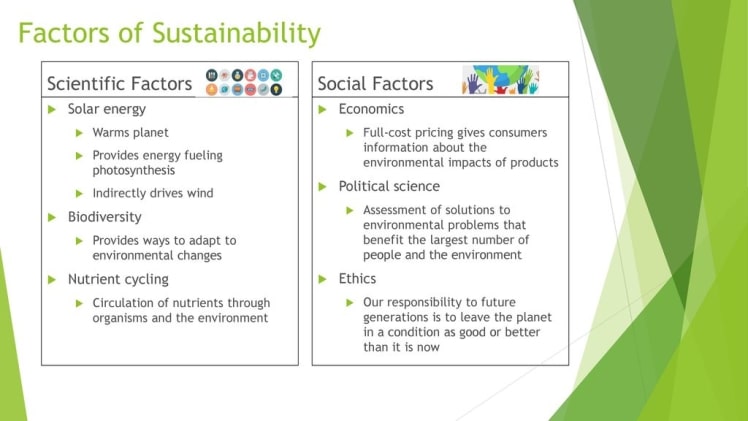The 5 Social Factors of Sustainability

There are five main components of sustainability. These are proximity to markets, volunteerism, and inclusion. These factors work together to achieve a company’s sustainability objectives. These are interrelated but distinct components. Understanding each one is vital to success. The three aspects of sustainability are outlined below. They should be considered when designing and implementing a new project.
Social sustainability
Social sustainability is a way to improve a company’s performance and contribute to the world’s communities. Whether it is the protection of human rights, the prevention of conflict, or the development of clean energy, companies can make a difference in society. By taking responsibility for their actions, they can shape laws and regulations and help address the needs of local communities. These efforts can range from small investments to large-scale social assets, and businesses can also partner with other companies to have a more substantial impact.
Social sustainability involves creating sustainable communities that provide for the basic needs of all members of society. The goal is to attract and retain diverse residents of different ages and backgrounds and enhance the organization’s health. To accomplish this, social sustainability incorporates the design of the physical environment with creating the social world. For more information on the factors of sustainability, you can visit sites like https://www.lycra.com/en/business-technologies/ecomade-solutions.
Impact of proximity to markets
In a recent study, three economists from Harvard and London Business School looked at the financial performance of 90 companies. The researchers compared the performance of companies with and without sustainability policies. The researchers found that companies with sustainability policies had a better financial performance. These results are consistent with other studies. But the question remains: why?
Sustainability helps companies focus on product innovations that use fewer resources and meet social needs. Investing in these innovations can increase profits and decrease costs. For example, Unilever changed the shape of its deodorant to reduce plastic consumption and launched a concentrated laundry product that uses less water. DuPont started its sustainability operations 20 years ago as a risk management strategy, but they have now made sustainability a significant profit center.
Impact of volunteerism
This study examines the impact of volunteerism on sustainability, physical health, and community development. It uses questionnaires to determine whether people are involved in various groups. Some of these groups focus on charity and service, while others focus on public issues like civil liberties and property rights. In addition, it measures the individuals’ self-reported health and level of depression.
Volunteers are generally motivated to help a community and develop their skills. Therefore, it is vital to choose an organization wisely and be selective. It is essential to trust your instincts. You should also ask questions about the organization during the sign-up process and avoid large organizations.
Impact of inclusion
Economic progress has been a powerful force in advancing inclusion. As a result, many poor people have enjoyed economic sufficiency, and the number of impoverished people is at a low level compared to decades ago. However, economic progress has also had its cost. Rising per capita income and population will inevitably increase resource demands.
It is crucial to ensure that the global sustainability movement is inclusive. A lack of diversity within the movement for environmental change can lead to greenwashing and a lack of genuine impact. The key to delivering real impact is authentic, measured action.
Impact of philanthropy
Philanthropy has a unique role in addressing global sustainability challenges. Its focus is on social issues, and through a combination of initiatives and partnerships, it can accelerate progress on SDGs. The UN’s Sustainable Development Goals (SDGs) are a set of 17 goals that aim to improve the world’s well-being by 2030. The UN estimates that the world needs between $5 trillion and $7 trillion in funding per year to reach these goals. While philanthropic contributions are a large part of this total, they are still a fraction of the required financing to achieve the goals.
One approach to assessing the impact of philanthropy on sustainability is to compare the different sectors and charities using quantitative metrics. This allows a more precise comparison without the need for subjective interpretation. It also avoids the risk of cognitive bias and errors from comparing different sectors and charities. However, some charities and sectors need to be better suited for quantitative comparison and need more resources to gather data and assess impacts.



